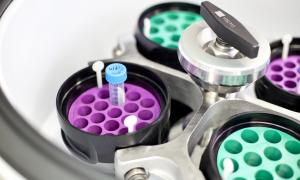PrEP does not increase the incidence of STIs in individuals at high risk for HIV

A three-year clinical trial confirms the effectiveness of PrEP and states that the incidence of STIs decreases in individuals who take it | It is known that people with sexually transmitted infections (STIs) are more likely to acquire HIV
A study recently published in the Lancet journal and presented at the last International AIDS Conference, compares two antiretroviral drugs as a method of preventing HIV transmission in people at high risk of infection, known as pre-exposure prophylaxis (PrEP). Thus, researchers have been able to reassure its effectiveness in the prevention of HIV infection. The trial involves 5,400 people —all of whom were HIV-negative at the start of the project and have been receiving PrEP daily— and detects a decline in the incidence of sexually transmitted infections (STIs) since the start of this ongoing clinical trial. The physician and researcher at IrsiCaixa and the Fight AIDS and Infectious Diseases Foundation Pep Coll has coordinated the study at the BCN Checkpoint community centre, which has been the European centre that has recruited most participants for the study.
PrEP is a complementary method for HIV prevention. It involves taking an antiretroviral drug on a daily basis or before having sex without a condom, and is recommended for people who are at high risk of infection. As of November 2019, the Spanish National Health System accepted to finance PrEP as a measure of prevention against HIV in people at high risk of acquiring the virus.
PrEP decreases the prevalence of STIs
DISCOVER, the joint project between the entities "Projecte dels NOMS-Hispanosida" and the Fight AIDS and Infectious Diseases Foundation, and in which Pep Coll has participated, involves approximately 5,400 people, all of them men who have sex with men and transsexual women who meet specific criteria to be considered at risk of HIV infection. Most previous clinical trials have shown that, by taking PrEP daily, the incidence of STIs in these individuals, which is already high, remains stable or even increases throughout the study. On the other hand, DISCOVER has confirmed a slight decrease among its participants.
"The incidence of rectal gonorrhea, an STI, is known to be directly related to HIV infection. Proving that PrEP has been associated with a decrease in the incidence of certain STIs in study participants highlights its importance and rules out the possibility that PrEP has negative consequences on STIs, one of the most widely used arguments to invalidate this prevention measure", says Coll.
A new option for HIV pre-exposure prophylaxis
Until now, the only drug approved for PrEP was the combination of emtricitabine and tenofovir disoproxyl fumarate (TDF), which has high efficacy if there is adequate adherence. "However, it can cause mild impairment of kidney function and bone density, although generally reversible and without increasing the risk of fracture", explains Coll. "With this study we mainly wanted to see if the new generation drug tenofovir alafenamide (TAF) is as effective in preventing HIV transmission and at the same time reducing the effect on the kidneys and bones", he adds. Both TDF and TAF belong to the pharmaceutical company Gilead, which has funded the study. The researchers were able to show that the two drugs protect equally from infection.
The study leaders emphasize that these results offer added therapeutic options that contribute to HIV prevention and provide the most appropriate option for each person's circumstances. "But even more important is ensuring that all people who could benefit from PrEP have equal access, and there is still work to be done in this area", notes Coll.